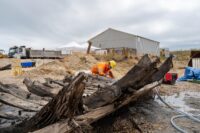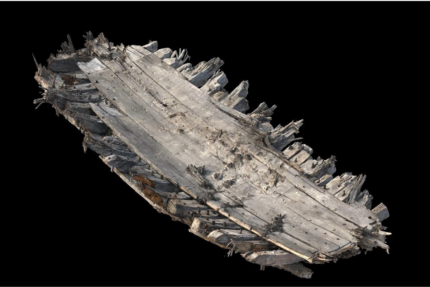 The remains of a rare 16th century ship have been discovered in a sediment layer in a quarry in Kent, southeastern England. Despite the enormous significance of this period in English seafaring history, very few ships built in England during the reign of Queen Elizabeth I have survived.
The remains of a rare 16th century ship have been discovered in a sediment layer in a quarry in Kent, southeastern England. Despite the enormous significance of this period in English seafaring history, very few ships built in England during the reign of Queen Elizabeth I have survived.
Over 100 timbers from the ship’s hull were recovered, with dendrochronological analysis, funded by Historic England, dating the timbers that built the ship to between 1558 and 1580 and confirming it was made of English oak. This places the ship at a
transitional period in Northern European ship construction. When ships are believed to have moved from a traditional clinker construction (as seen in Viking vessels) to frame-first-built ships (as recorded here), where the internal framing is built first and flush-laid planking is later added to the frames to create a smooth outer hull. This technique is similar to what was used on the Mary Rose, built between 1509 and 1511, and the ships that would explore and settle along the Atlantic coastlines of the New World.
The aggregate quarry on the Dungeness headland is now 1000 feet from the coast, but when the ship was built, the find site was likely on the coastline. It’s not clear from the remains if it met a violent end in a clash against the headline or if it was simply abandoned when it stopped being worth repairing and left to sink. The discovery has the potential to shed new light not just on Elizabethan shipbuilding and trade, but on the natural history and the commercial development of the Kent coast as well.
The ship has been documented, photographed and laser-scanned to create a detailed 3D model that can be studied without exposing the ship to the elements. Once the excavation and recording of the ship is complete, it will be reburied in the same sediment layer where it was found so the timbers will be preserved as they have been for almost five centuries.
